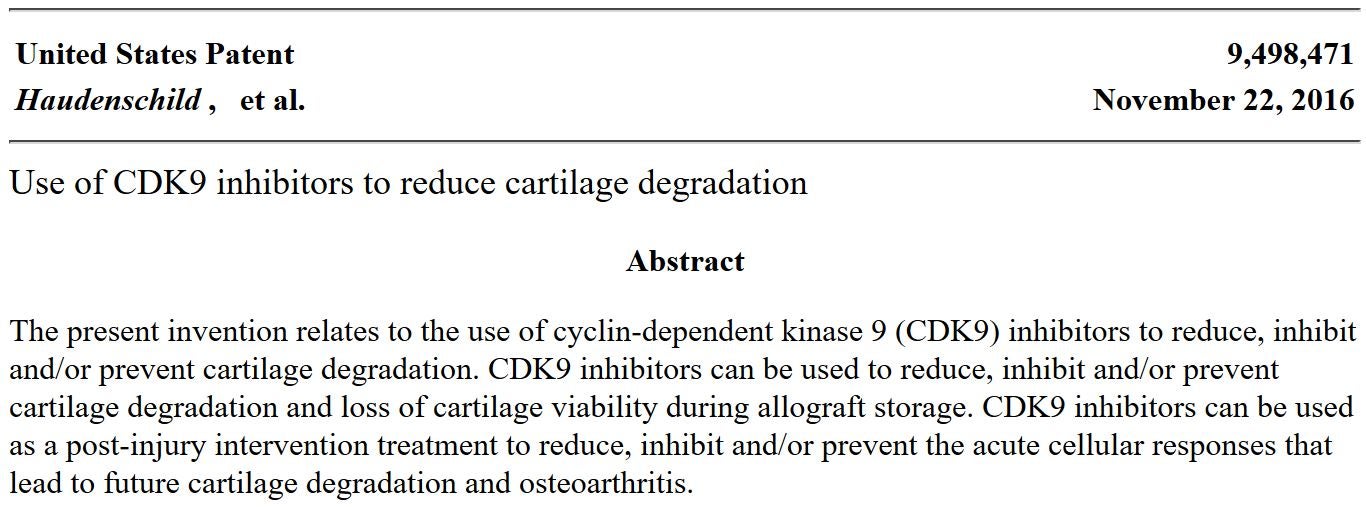Lab’s Second Patent Issued on Cdk9 in Arthritis!


Our lab had its second patent issued, to the Regents of the University of California. A few years ago, it became apparent that Cdk9 kinase activity controls the activation of primary response genes. We applied this knowledge to the context of post-traumatic arthritis. Scientifically this is very exciting because we can now better understand how joint injury leads to arthritis. We can now separate the effects of the purely mechanical damage on joint tissues, from the effects of the cellular responses. Once an injury happens, the mechanical damage has already occurred and can’t be undone. However, the injury causes cellular responses that begin within minutes, and continue for weeks. We can now start to dissect how these cellular responses can either benefit the long-term health of the joint, or promote arthritis progression.
We expect that this will have commercial potential. We discovered that preventing activation of primary response genes right after a joint injury greatly reduces arthritis severity in mice. There are so many joint injuries that occur every year, especially in younger athletic people. It is clear that many of these injured joints will become arthritic over time. Our research vision is to prevent arthritis even in injured joints. Today, most joint injuries do not get treated during the acute phase of the injury. This is especially true during the first 12-24 hours, or even the first week after the injury. We see this early time-frame as an opportunity for a therapeutic intervention to help reduce the chances of developing future arthritis.
The full text of U.S. patent 9,498,471 is here. Our manuscripts on this topic are published in Arthritis & Rheumatology, and European Cells & Materials. Links to these publications are on our Publications page here. We have a lot more in-vivo data, which will be published in more manuscripts soon…
The University of California has a generous patent policy, publicly available here. In our case, UC initially paid for the entire patent application process. If the patent generates revenue, UC will first recover the patent filing costs. After that, 35% of the net royalties and fees are paid to the inventors, and another 15% returns to the campus or laboratory to fund research. There is some interest from a pharmaceutical companies to license this patent from the University.